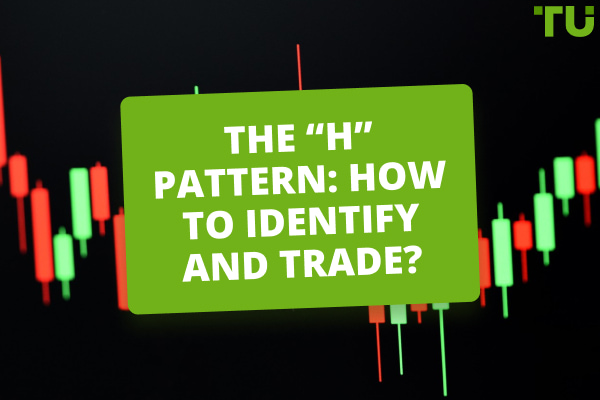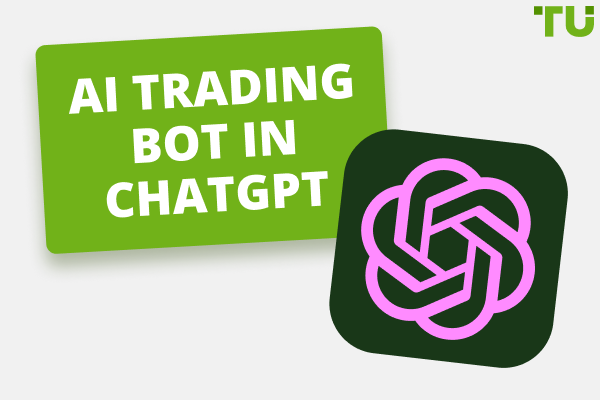Stop Loss Hunting Explained
Stop loss hunting is an unethical strategy used by notorious traders to gain from the market at the cost of retail traders. They achieve this by driving the asset's price to a point where most traders have set their stop losses.
In the vast landscape of financial markets, the term "stop loss hunting" often raises concerns among traders. Understanding the intricacies of this phenomenon is crucial for navigating the markets effectively. In this article, the experts of TU will unravel the mysteries behind stop loss hunting, dissect the strategies involved, and discuss prudent stop loss rules to shield your trades from potential manipulation. They will also explore how you can potentially use this strategy to your own advantage while maintaining a legal approach.
What is stop loss hunting?
Stop loss hunting is a strategic manoeuvre allegedly used by institutional traders and market makers to exploit the predictable behavior of retail traders. It involves intentionally triggering a cluster of stop loss orders placed by traders around key levels such as support and resistance. By driving prices to hit these stops, large players create artificial volatility, allowing them to enter or exit positions at more favorable prices.
Consider a scenario where a currency pair breaches a significant support level. Generally, retail traders would set stop losses just below this level. Capitalizing on the same, stop loss hunters intentionally trigger these stops and then initiate buy orders, capitalizing on the rebound. In another instance where a stock nears a significant price threshold, trader's generally places stop orders just below that mark. Stop loss hunters would then attempt to push the price below the threshold, triggering stop losses, and then buy shares at the lower price, creating a temporary dip and subsequent surge.
Example of stop loss hunting
Consider a scenario where Company XYZ's shares are steadily climbing. You, the trader, have placed a stop loss order at $100, hoping to secure your gains and limit potential losses. However, a group of stop loss hunters identifies this common strategy and stop loss level among retail traders. They subtly influence the market, causing XYZ's stock price to dip momentarily to $99.90, triggering a cascade of stop loss orders, including yours. In this example, the stop loss hunters exploited a psychological price point ($100) commonly used by traders. By driving the price slightly below this level, they triggered a wave of automatic sell orders, enabling them to buy shares at a lower price before the market corrected itself.
The psychology behind stop loss hunting
Emotions, notably fear and greed, significantly impact the choices made by individual traders. The fear of incurring losses and the eagerness for swift profits render traders susceptible to manipulation. Stop loss hunting strategically exploits these emotional states, triggering quick and impulsive trading responses among traders. When traders fear losses or are enticed by potential gains, they tend to act hastily, often without thorough analysis, creating opportunities for manipulative practices like stop loss hunting to thrive. This phenomenon underscores the psychological complexities at play in financial markets.
Stop loss hunting strategies
It is vital to understand the common stop loss hunting strategies at play to safeguard your trading set-ups from such malicious activities:
Identifying vulnerable levels
Stop loss hunters meticulously study support and resistance levels where retail traders commonly place their stop loss orders. These levels act as magnets for stop loss hunting activities. When prices approach these points, stop loss hunters initiate calculated moves to trigger these stops.
Emotional exploitation
Stop loss hunting strategically exploits traders' emotions. Fear-driven panic selling, and greed-induced buying are triggers commonly used in these manoeuvres. Institutional traders manipulate market movements to capitalize on these emotional responses, creating opportunities for profit.
Prudent stop loss rules
Experts highlight the following stop loss rules to potentially mitigate the downsides of predatory stop loss hunting activities:
Wider stop loss placement
To avoid falling prey to stop loss hunting, traders should aim to set wider (but reasonable) stop losses. These wider margins provide breathing room, preventing trades from being easily triggered by minor price fluctuations. Considering market volatility and critical support/resistance areas, wider stop losses offer better protection.
Avoiding round numbers
Many traders tend to place their stop losses at round numbers (e.g., $50 or $100). These predictable levels are commonly referred to as “psychological support/resistance levels” and often become targets for stop loss hunting. To counter this, traders should avoid using round numbers and instead base their stop loss levels on proprietary technical analysis rules, making it harder for manipulators to predict their moves.
Utilizing trailing stop losses
Trailing stop losses act as a defense mechanism against sudden market reversals caused by stop loss hunting. By automatically adjusting the stop loss level as the price moves in a favorable direction, traders can secure profits and create a buffer against abrupt changes. Trailing stop losses locks in gains while allowing room for market fluctuations, ensuring a balance between profit-taking and risk management.
Defences against stop loss hunting
As a trader, safeguarding your investments is paramount. Stop loss hunting, a deceptive practice employed by manipulators, can wreak havoc on your trades. So, to fortify your positions, adopting astute defences is essential. Here’s how you can shield your trades against stop loss hunting with a blend of simplicity and professionalism:
Advanced technical analysis
Mastering advanced technical analysis unveils the subtle hints hidden within complex market patterns. By delving into intricate chart analysis, traders can figure out potential loss hunting scenarios. Recognizing these patterns empowers you to make informed decisions, steering clear of manipulative traps.
Understanding market psychology and sentiments
Delving into behavioral analysis and sentiment indicators offers glimpses into market psychology. Grasping the overall sentiment enables you to predict manipulative manoeuvres. By sensing the market's emotional tone, you can stay ahead, crafting trades rooted in logic rather than impulsive feelings.
Risk management strategies
Effective risk management is the cornerstone of resilient trading and implementing comprehensive strategies is vital for any trader. This includes judicious position sizing and ensuring that your investments align with your risk tolerance. Diversification spreads your risks across various assets, minimizing the impact of a single unfavorable move. Dynamic stop loss adjustments, tailored to counter stop loss hunting, act as your shield against sudden market fluctuations.
Stay informed and flexible
Continuous learning and staying updated with market trends can turn out to be a trader’s strongest defences. The more they understand the market dynamics, the better they are equipped to spot potential manipulations. Remaining adaptable to changing market conditions ensures one’s ability to adjust his strategies in response to evolving stop loss hunting tactics.
Trust your instincts, along with data verification
While instincts play a role, relying solely on gut feelings can be perilous. Always validate your intuitions with data-driven analysis. Combine your trading experience with factual market data to make decisions grounded in both intuition and evidence.
Consider trading communities
Engaging with fellow traders in online communities can be enlightening. Sharing experiences, discussing strategies, and learning from collective knowledge fortify your defenses. Collaboration not only widens your perspective but also strengthens your ability to navigate the intricate world of trading. You also can be interested in information about pros and cons of collective trading.
Efforts against stop loss hunting practises
Embracing predictive analytics and AI
In the realm of trading, cutting-edge technologies like predictive analytics and artificial intelligence (AI) are reshaping the way traders operate. Predictive analytics, utilizing historical data and sophisticated algorithms, offers insights into future market trends. When coupled with AI, which processes vast datasets and detects intricate patterns, these tools become invaluable. Specifically concerning stop loss hunting, these technologies can analyze historical trading behaviors and market sentiments, potentially predicting manipulative strategies. AI-driven algorithms, equipped with machine learning, continuously adapt, enhancing their accuracy. Traders leveraging these tools gain a strategic edge, allowing them to anticipate and counter stop loss hunting effectively.
Regulatory changes
Regulations in financial markets are continually evolving to ensure fairness and transparency. Vigilant regulatory bodies are addressing manipulative practices, including stop loss hunting. Traders must stay informed about these regulatory shifts. Changes can influence trading strategies, risk management, and the platforms used.
Is stop loss hunting the same as market manipulation?
In the world of finance, two terms often confuse traders – stop loss hunting and market manipulation. Stop loss hunting, a practice employed by certain brokers and liquidity providers, involves algorithms targeting clusters of traders' stop loss orders, turning potential profits into losses. It's essential to distinguish this from market manipulation, where institutions strategically and illegally influence prices for gains. When traders face sudden price spikes, occurring in "buy or sell zones," confusion arises. These zones blur the line between stop loss hunting and market manipulation, posing challenges for traders aiming to profit from market volatility.
In essence, understanding these tactics is crucial. Stop loss hunting operates at a more strategic level, deliberately trading based on other traders' stop losses, while market manipulation involves malicious price influencing. Though one thing remains common, that both these practices are considered unethical and often illegal. Traders must remain vigilant, employing careful strategies to navigate this complex financial landscape.
Best Forex brokers 2024


Summary
In the complex world of finance, understanding "stop loss hunting" is essential for traders. This practice involves big players’ attempts to trigger small traders' automatic sell orders, taking advantage of their fears and desires for quick profits. TU experts explored the tactics employed, emphasizing the importance of wider stop losses, avoiding round numbers, and using trailing stop losses as defensive measures. Additionally, they underscored the significance of grasping market psychology and staying informed about regulatory developments. By employing these strategies and insights, traders can potentially safeguard their investments from manipulative practices, ensuring a more secure trading experience.
FAQs
What is the best stop loss rule?
The optimal stop loss rule involves setting a risk level that preserves your capital and considering a risk-reward ratio of 2.5:1 or 3:1, essential for effective intraday trading. Avoiding a 1% stop loss with a 1% price target ensures a balanced approach.
What is stop-loss hunting?
Stop-loss hunting is a deceptive strategy where stock operators, large institutions, and occasionally brokers deliberately trigger retail traders' stop-loss orders, causing losses for the traders. This practice exploits the vulnerability of individual investors, leading to significant financial consequences.
Are stop-loss hunts real?
According to experts, stop-loss hunts are indeed real, causing unexpected losses for traders. While essential to understand for protection, they remain controversial due to their manipulative nature.
Do successful traders use stop losses?
Successful traders recognize the importance of stop losses to manage risks effectively, debunking the myth that professionals don't use them. Trading without stop losses, especially with leverage, poses significant risks and is a common mistake made by inexperienced traders.
Glossary for novice traders
-
1
Broker
A broker is a legal entity or individual that performs as an intermediary when making trades in the financial markets. Private investors cannot trade without a broker, since only brokers can execute trades on the exchanges.
-
2
Stop loss hunting
Stop loss hunting is an unethical strategy used by notorious traders to gain from the market at the cost of retail traders. They achieve this by driving the asset's price to a point where most traders have set their stop losses.
-
3
Trading
Trading involves the act of buying and selling financial assets like stocks, currencies, or commodities with the intention of profiting from market price fluctuations. Traders employ various strategies, analysis techniques, and risk management practices to make informed decisions and optimize their chances of success in the financial markets.
-
4
Risk Management
Risk management is a risk management model that involves controlling potential losses while maximizing profits. The main risk management tools are stop loss, take profit, calculation of position volume taking into account leverage and pip value.
-
5
Volatility
Volatility refers to the degree of variation or fluctuation in the price or value of a financial asset, such as stocks, bonds, or cryptocurrencies, over a period of time. Higher volatility indicates that an asset's price is experiencing more significant and rapid price swings, while lower volatility suggests relatively stable and gradual price movements.
Team that worked on the article
Chinmay Soni is a financial analyst with more than 5 years of experience in working with stocks, Forex, derivatives, and other assets. As a founder of a boutique research firm and an active researcher, he covers various industries and fields, providing insights backed by statistical data. He is also an educator in the field of finance and technology.
As an author for Traders Union, he contributes his deep analytical insights on various topics, taking into account various aspects.
Dr. BJ Johnson is a PhD in English Language and an editor with over 15 years of experience. He earned his degree in English Language in the U.S and the UK. In 2020, Dr. Johnson joined the Traders Union team. Since then, he has created over 100 exclusive articles and edited over 300 articles of other authors.
Mirjan Hipolito is a journalist and news editor at Traders Union. She is an expert crypto writer with five years of experience in the financial markets. Her specialties are daily market news, price predictions, and Initial Coin Offerings (ICO).









